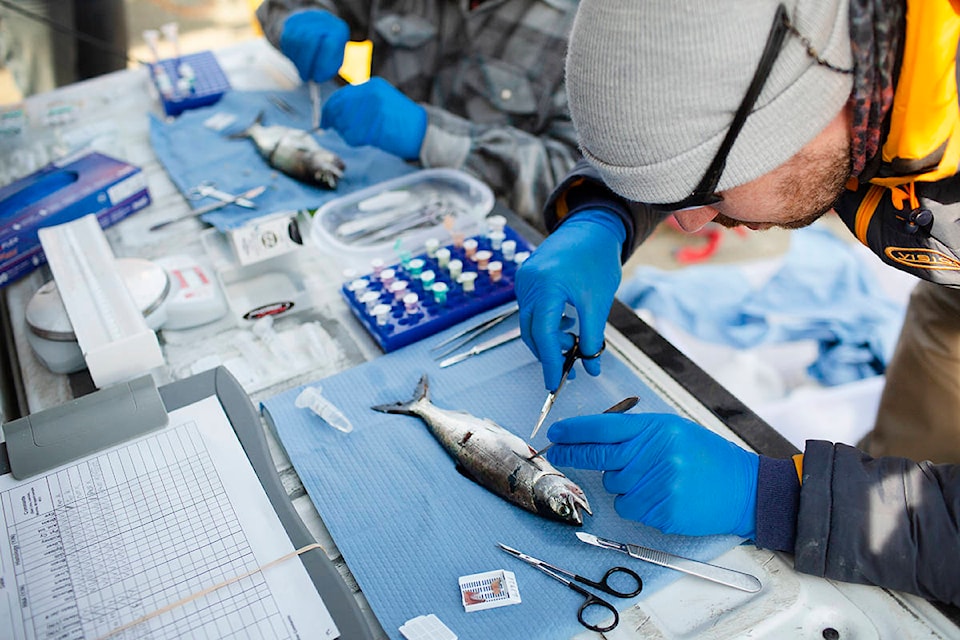A series of new fish-infecting viruses have been discovered in endangered Chinook and Sockeye salmon populations.
Among three new viruses discovered is a virus that has never been known to infect fish before, according to a news release from UBC researchers released on Wednesday.
While the impact of the viruses on salmon health isn’t yet known, all three are related to viruses that cause serious disease in other species, the study suggests.
Researchers from UBC’s earth, ocean and atmospheric sciences department, along with Fisheries and Oceans Canada scientists, used DNA sequencing to screen for viruses within more than 6,000 salmon from along the B.C. coast, including wild, hatchery and aquaculture fish.
UBC and Fisheries and Oceans Canada researchers used DNA sequencing followed by tests specific to each virus to screen more than 6,000 salmon from along the B.C. coast, including wild, hatchery and aquaculture fish.
READ MORE: DFO to test for harmful virus at B.C. fish farms
UBC’s department of earth, ocean and atmospheric sciences researcher Gideon Mordecai says he was surprised by this latest discovery, which was published this week in the research journal eLife.
“We were surprised to find viruses which had never before been shown to infect fish,” said Mordecai.
“Although there’s no risk to humans, one of the viruses is evolutionary related to to respiratory coronaviruses, and is localized to the gills. That suggests it has a similar infection strategy to its distant relatives that infect mammals.”
One new virus was detected in 15 per cent of all hatchery Chinook tested, which is more commonly found in hatchery salmon.
Another new virus was detected in 20 per cent of Chinook fish found in B.C. fish farms, but was only found in adult or sub-adult salmon. Usually, these viruses are more likely found in cultured fish than in the wild.
The research findings come as the population of Chinook and sockeye salmon continue to decline – a trend scientists have been documenting for 30 years.
While much of the focus has been on the impact of piscine orthoreovirus, the new findings highlight how little is known about other viruses endemic to salmon populations.
UBC virologist Curtis Suttle said the findings emphasize the potential role that viral disease can play in wild fish stocks.
“It’s essential that we determine whether these viruses are important factors in the decline of Chinook and sockeye salmon stocks,” Suttle said.
“The research highlights the need for robust surveillance to improve our understanding of how viruses might impact the health of wild Pacific salmon populations.”
